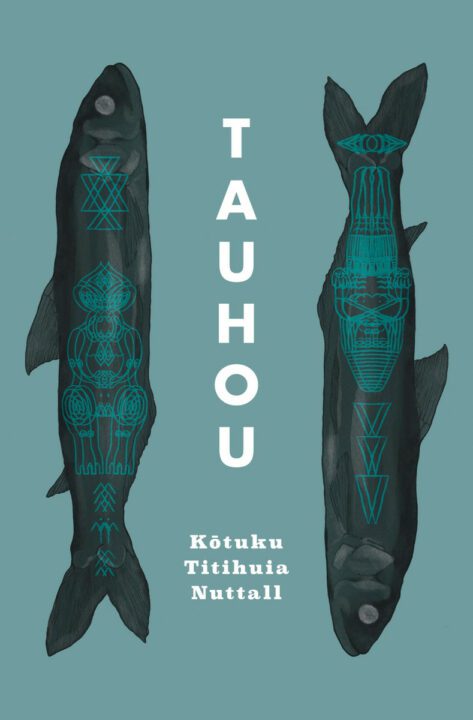Tauhou by Kōtuku Titihuia Nuttall

Tauhou by Kōtuku Titihuia Nuttall. THWUP (2022). RRP: $30.00. Pb, 168 pp. ISBN: 9781776920259 Reviewed by Isla Reeves Martin.
Tauhou, by Kōtuku Titihuia Nuttall is a refreshing tale of cultural dissonance, connection, and indigeneity. In an imagined reality in which the author’s two cultures, Māori and Coast Salish, find themselves aligned in geography and experience, the reader is taken on a journey that is both familiar and foreign; natural and yet unsettling. With great lyricism, and with the inclusion of both indigenous languages, the writing in this book takes the reader to a place in which the issues plaguing our own world are realised in crystal clarity, but also a place in which the taonga of indigenous understandings are seen and heard, brighter, and clearer than ever.
“… four parallel lines across my cheeks
two or three down the chin
the colour pushed underneath my skin with a needle and a nettle fibre
the strands of DNA we lost to smallpox
a set of paints made from ochre
or from animal fat and the charcoaled ends of a devil’s club stem
… a killer fry bread recipe.” (P. 138)
Set in a world in which the Coast Salish and Māori peoples live on neighbouring islands, Tauhou tells the tale of those who exist in this new, distorted, and still-colonised reality. It brings us into the lives of those who live here, some of them in dwellings built high above the water, which of course, is rising; and some in marae, which of course, remain strong. Through a variety of voices, Tauhou tells the stories of these lives in a way that feels more poem than novel, to draw upon the connections between the indigenous peoples of either island and their ways of life, while retaining the individual uniqueness and perspective of each. It is through this weaving of the indigenous experience that Nuttall is able to shape the story of Tauhou so eloquently. Although not an autobiography or piece of historical fiction, the elements of storytelling, language and mātauranga seep so effortlessly into the book, alongside some of the horrors that indigenous peoples have been faced with in the post-colonial era, and give a sense of rawness, and a relatability to the tale.
“She’s never believed in any god, but anytime she enters the ocean there seems to be an inevitable drag and pull, a force that’s inextricably alive.” (P. 89)
Nuttall has the ability to write in a way that defies borders, and restriction; much like the lives of the characters who live in the Tauhou world. Tauhou is genre-bending, but at all times, holds fast to the key themes that are real in both the author’s imagined location, and in the real world around us. Through the eyes of Hīnau, Miro, Star, Cedar, and the other inhabitants of these lands – both Vancouver Island and Aotearoa at once – Nuttall explores the lives of queer and takatāpui people, delves into the threat of climate change on indigenous populations, bears the weight of the trauma of residential schools, and shines a light on gender, healthcare, and traditional practices. For a work of fiction, Tauhou is reflective of what many of us have already experienced for ourselves or for our whānau; some parts painful, some parts healing, as is the indigenous experience for us all.
“When she washes her face before bed, she sees them in the mirror, the markings her whole family should have. She sees the thousand different women who made her, tattooed between the tattoo’s teeth in ink and blood.” (P. 41)
Overall, the key theme that sews this book together, in all of its genre mixing, culture blending and history exploring, is whenua. The land, in its imagined state, still remains the most important taonga to the characters in this book, and hence to the reader in their understanding of it. It is through the connection to the landscapes between both Vancouver Island and Aotearoa that the inhabitants of each whenua hold true to their culture, and yet it is through the landscape too that Nuttall produces a fictional reality, that climate change may lead to be not-so-fictional after all. It is the forest in which the wāhine walk through. It is the dirt roads they travel on to meet family. It is the woven cedar, the volcanos and the moonfish. It is the moana, on which they travel to meet each other, again, across the horizon.